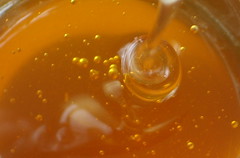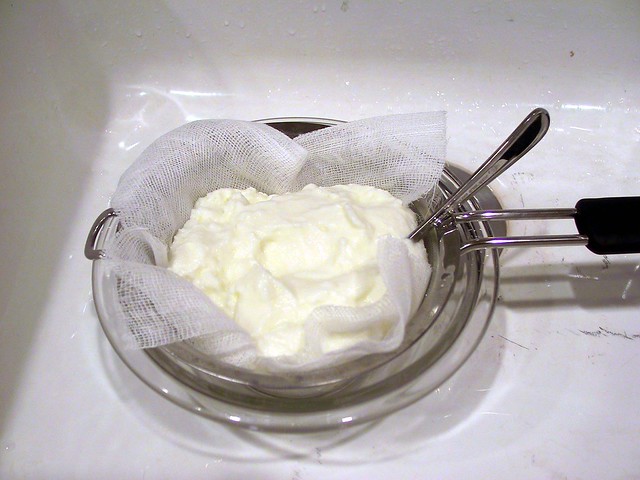
|
| Fog by Rickydavid, on Flickr |
detox
brain fog
As I write this, I am currently in stage 4. I had a lot of brain fog throughout stage 2 & 3, so while I kept a few notes to remember what was going on, I really wasn't up to writing updates, or doing much of anything.
To my mind, the big question is... what is the difference between a detox reaction and a food intolerance and how do I know which I'm experiencing.
I've always been a bit suspicious about detox reactions. On the one hand, I completely understand that the Jarisch-Herxheimer reaction actually exists and is real and documented.
On the other hand, it seems like every type of snake oil out there claims all the good effects are due to the snake oil and the bad effects to Herxheimer reactions. This strikes me as very convenient for those who sell snake oil.
In the GAPS book, Dr. Campbell-McBride makes it clear that both detox reactions and new food intolerances can occur, and in either case, she feels you should back off on the changes that brought on the reaction and go slower. She believes detox should be done slowly and gradually so as to minimize symptoms.
Cara, author of the What Can I Eat Now? 30 Days on GAPS Intro Handbook, has an article on her blog What is a Healing Crisis? in which she discusses the difference between a healing crisis (detox) and a reaction (food intolerance).
In my case, there's a possible third possibility - ketosis. When you go low-carb, you can feel crappy for a few days, something called "induction flu" as your body switches over from a carb-fueled biochemistry to a fat-fueled biochemistry.

|
| garlic by Muffet, on Flickr |
garlic
I wound up deciding that, for me, I was going through detox, and that's because of another symptom. I went CRAZY for garlic.
No, I mean REALLY crazy.
You may recall during stage 1, I had difficulty getting the raw garlic down, and before a Facebook friend gave me a new method of eating it raw, I roasted a few heads. Well, I roasted a few more. And a few more.
During a week on stage 2, I ate over 15 heads of roasted garlic. And I ran out days before I went on my weekly shopping trip!
I am of the opinion that if you are craving something, assuming it's not Twinkies, then your body must need it. So I had no problem eating piles of garlic, as, well I've never heard of anyone overdosing on garlic. But curiosity got me to Google and I'll be darned if I can figure out anything like an essential nutrient that exists in garlic moreso than in other foods I'm eating.
But everyone says it's great for detox. So... if you can sit and eat an entire head at once, and then crack open a second head, seems like detox might be going on.

|
| Cooking - s. b. egg by Edsel L, on Flickr |
main diet
My plan for stage 2 was ginger squash soup and soft-boiled eggs for breakfast, egg drop chicken soup for lunch (recipe will be posted soon) and crockpot pulled pork and turmeric green beans for dinner (again, recipes will be posted soon).
I would say the biggest surprise was the soft-boiled eggs. I haven't eaten them since I was a child, my mom used to give them to us in egg cups, with the top chopped off with an egg scissors, and strips of toast to dunk in them. I've no idea why I never made soft-boiled eggs on my own.
I freaking LOVE soft-boiled eggs. They're frankly nicer than over-easy or poached. The cooking is easier too, you can get every last bit of the white completely cooked, so there are no slimy bits, and the yolk remains perfect and orange and soft.
I peel them into a bowl and add a tsp of ghee and some sea salt and eat them with a spoon.
I did add eggs gradually, but very rapidly wound up eating a lot when I saw no reaction. Eventually, I got a bit concerned that I was overdoing it and went to the book and saw she recommended 4-8 egg yolks daily for adults. So... turns out, unlike the garlic, I am not overdoing it.
But there is another strange thing I'm doing aside from the eggs and garlic, turns out I like eating teaspoons of straight honey.

|
| Honey by Siona Karen, on Flickr |
honey
While honey is not a specifically allowed food on intro, ginger tea with honey is allowed for stage 1. Thus, my convoluted little mind decided that since I don't like ginger tea, I'd have it without the ginger. And without the water.
In short, I am eating spoonfuls of this creamed honey I bought at the farmer's market in spring. I had tasted it once, but being uncertain what to do with creamed honey, I never used it again.
Turns out it makes a decent snack when one is not allowed lunch meats and pepperoni or cheese - the things I normally snack on between meals.
Now, no matter how healthy anyone thinks honey is, I remain diabetic. So this is not something I can eat like crazy. However, a tsp of honey is only 6 gram carb, so I figured a teaspoon once or twice a day between meals was OK. I am doing this sort of like Jenny's notion of the 2 gram cure.
My stage 2 meal plan runs 72 grams carb, 130 grams protein and 1696 calories, so needs a bit of carb added to it anyways. I was aiming for 100 G carb/day to avoid low-carb, so this helps keep me out of ketosis.
Since I'd gotten such a small container of it, I ordered more honey from Your Family Cow via my milkman.

|
| Sliders by fritish, on Flickr |
burgers
My husband had burgers for dinner one night and I envied him. After a couple days, it occurred to me that I could eat burgers, as long as they weren't fried. So I simmered a couple burgers and a diced onion in water. This tasted vaguely like White Castles, guess cause they steam their burgers.
It was OK, but greatly improved by the addition of a couple soft-boiled eggs over top.
Frankly, it's unlikely to be repeated until I'm allowed to fry as boiled burgers are much less yummy than you'd think.

|
| Yogurt by Mom the Barbarian, on Flickr |
dairy
I had gradually increased the whey in my soups/stews during stage 1 and when I ran out, just started using yogurt directly.
I recently reread the bit in the book about dairy, and the addition is supposed to go: whey, ghee, butter, then yogurt. So I am out-of-order adding yogurt back before butter. However, I made a pound of ghee, so am going to use it up before going back to butter. Using up ghee when not allowed to fry is a slow process, so the yogurt is just out-of-order.
I am frankly rather missing dairy and not very willing to slow down.
I am making yogurt every 10-14 days, as my experience is that waiting much longer means the next batch doesn't culture well. I am making 4-5 cups at a time using my previously posted thermos method. So far, a 24-hour incubation keeps resulting in my raw, organic milk setting up well even though I'm only heating to 100-110 degrees.
coffee
The removal of coffee from my life is not going well; in fact, it is not going at all. I believe that doing GAPS Intro is difficult enough without caffeine withdrawal. I ought to have done the caffeine withdrawal first, then started GAPS. And I may well do intro again sometime in the future, if so, it'll definitely be without coffee.
Meanwhile, I'm trying to limit the coffee by making every other cup NOT coffee, but chicken broth instead. We're supposed to drink lots of broth, and while it does not "replace" coffee exactly, it is a warm, savory, umami-ful drink that fits the same spot in a comfort sense.
One of my issues with coffee is that I just can't drink it black. Until a few years back, I used heavy cream. My husband uses whole milk, so as a compromise when we went camping, I brought half-and-half. I got used to the half-and-half, though he didn't and still prefers milk.
When I began using coffee again during stage 1, I cracked open a can of coconut milk and scooped a spoonful of cream off the top. It did taste slightly coconut-ty, but relatively neutral, not TOO coconut-ty. I decided it worked for me.
I know some folks use coconut oil directly in their coffee, and I can't explain why this doesn't work for me. It's the same reason that when doing dairy, I can add heavy cream to my coffee, but not butter. Yes, I know they're the same thing. But they're just not.
Of course, canned coconut milk itself is a "cheat" - the book includes recipes for making coconut milk from fresh coconuts. I knew when I read that, it was never going to happen.
When we lived in Florida during my childhood, my mom sometimes bought fresh coconut. Her method of opening one was top send 4 kids into the backyard with a hammer. While I have a hammer, I'm short on kids, having only had one and her having run off to Texas.
I live in PA and we don't happen to have coconuts here, so even if I suddenly found 4 kids somewhere, fresh coconut is not available to me. The whole coconuts I occasionally see in the grocery are definitely NOT local.
Given that coconut can't be a local food for me anyways, I decided to find the best coconut I could. Not being in BPA-lined cans was a big consideration, but many "BPA free" cans are lined with BPS-containing plastic, just replacing one chemical with known side effects with another with the exact same toxic effects. So I decided to go with aseptic packaging.
This is the stuff I decided to go with, Aroy-D 100% Pure Coconut Cream. It comes in one-liter aseptic packages and costs less than $10/liter. The package says it should be refrigerated after opening, and used within two days. I am ignoring this; I keep it closed at room temperature and use it up within about 10 days and have no problems with it.
I am also using it for recipes calling for coconut milk, just replacing the milk with half cream and half water.
other stuff
health update
Other than the brain fog, there's been no symptoms. I did have edema in my feet one day, but never took any K-dur and it passed anyways.
preparation for stage 3
Stage 3 allows pancakes made with squash, nut butter & eggs. I bought raw nuts, soaked, dehydrated and made nut butters, but will post about this separately as this post is already too long.
I also considered chicken broth. I am drinking about a quart per day. While I like beef broth just fine in stews and casseroles and to deglaze meats, I'm not fond of it by itself. But to eat enough chicken to keep me in broth would pretty much be a chicken-only diet!
I ran across this notion of perpetual chicken stock whilst blog-hopping. And since I can get big batches of chicken necks & backs from my favorite farm at a discount, I thought I would do this.
My thinking was, start stock, after 24 hours, start eating it and replacing the liquid, and once it go too thin, strain the remaining broth to use while the next batch got going.
The problem wound up being that by the second day, it was boiling. Though I've made broth many times in my crockpot, I've never tried to keep it going, and it got sorta burnt-tasting after a while. So though I love the idea of perpetual chicken stock, the reality doesn't seem to be working out for me.
One of the annoyances of not having a Kindle version available is there's no way to search the book. I seem to recall Dr. Campbell-McBride said not to use a pressure cooker, but I don't remember why and can't locate the info. But given the crazy amounts of broth needed, I have moved to my pressure cooker for broth-making as it needs to be made a LOT.
I shared this post at Creative Juice, Weekend Gourmet, Fight Back Friday, Fill Those Jars Friday, GAPS Friendly Friday, Whole Food, Sunday School, Make Your Own, Monday Mania, Fat Tuesday, Traditional Tuesdays, Scratch Cookin' Wednesday, Allergy Free Wednesday, Gluten-Free Wednesday, Healthy 2Day, Real Food Wednesday, Whole Foods Wednesday and Wildcrafting Wednesday.

